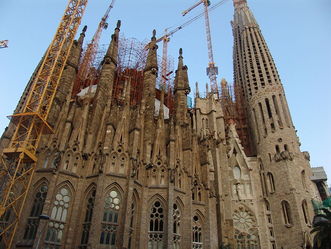8th Grade Webpage
History of La Sagrada Familia
La Sagrada Familia was not originally Antoni Gaudi's idea, but of the Catalan publisher Josep Bocabella. Work began in 1882 by public subscription on a design by architect Francesc de Paula Villar, which proposed a simple church in a traditional neo-Gothic style. After arguments between Bocabella and Villar, it was Gaudi who took over as lead architect in 1884. Gaudí immediately changed the project completely, seizing the opportunity to express his strong religious and nationalist feelings. Gaudi practically lived as a hermit for the 40 years he spent working on La Sagrada Familia, living in a workshop on the site. When questioned about the slow pace, he is said to have replied, "My client is not in a hurry." The project suffered when Gaudi had an untimely death in 1926 but work continued under the direction of Domènech Sugranyes. The project was once again interrupted by the outbreak of the Spanish Civil War in 1935. The building remained intact during the war, but in 1936 many of its models and plans were destroyed by Catalan anarchists, who saw the church as a symbol of the old, conservative religion that had no place in the new Barcelona. Construction began again in the late 1950s and has continued ever since. The current design is based on a combination of reconstructed versions of the lost plans and modern adaptations. The current architect, Jordi Bonet i Armengol, began using computers for the design and construction process in the 1980s, which has sped up the complicated process considerably. But even though it has new technology, construction is still slow. The estimated completion dates range from 2020 all the way to almost 2050.

